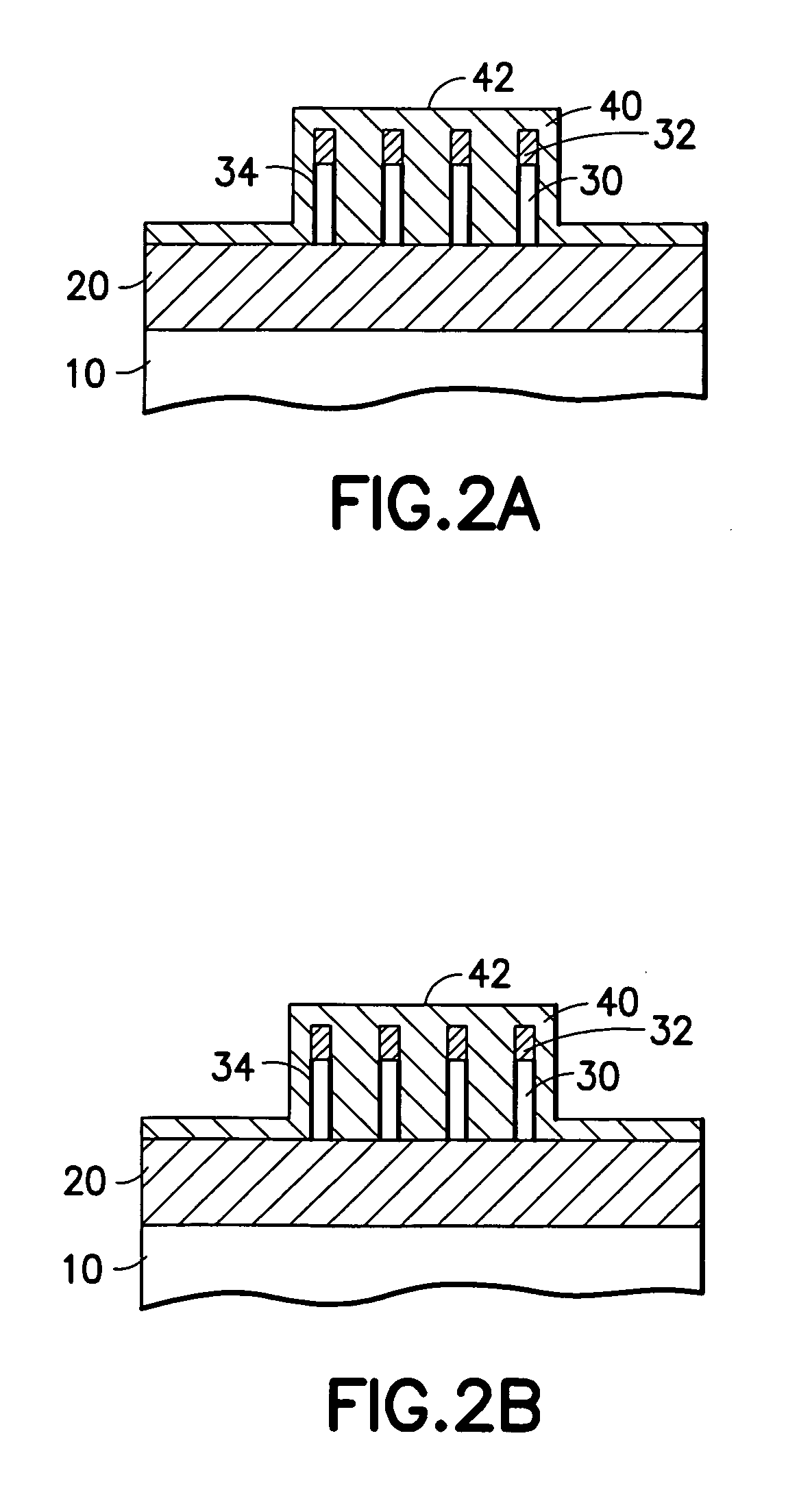Locally thinned fins
a technology of local thinning and fins, applied in the direction of transistors, electrical devices, semiconductor devices, etc., can solve the problems of reducing the ability of the gate to control whether the device is placed or not, degrading the ability of the gate to control whether the device is placed, and achieving the effect of reducing the thickness
- Summary
- Abstract
- Description
- Claims
- Application Information
AI Technical Summary
Benefits of technology
Problems solved by technology
Method used
Image
Examples
Embodiment Construction
[0032] This invention describes a process to fabricate locally thinned fins in the body region of the transistor. The advantage of a locally thinned fin is: Higher mechanical stability of thin fins (since most of the fin is thicker and stronger than the thin region); formation of halos and extension by ion implant; and because due to the thicker fin body outside the gate not all of the silicon is amorphized and amorphized silicon can therefore be recrystallized again.
[0033] A feature of the invention is a gate spacer process that protects the gate while the sidewall of the fins is cleared from the gate spacer material (e.g. nitride) and from other materials. Clearing the fin sidewall from unwanted spacer material is quite difficult as a long overetch of the gate spacer is required. This overetch that clears the sidewall of the fins also consumes the conformal gate spacer on top and on the upper sides of the gate, thereby exposing the polysilicon gate material. Cleared fin sidewalls...
PUM
 Login to View More
Login to View More Abstract
Description
Claims
Application Information
 Login to View More
Login to View More - R&D
- Intellectual Property
- Life Sciences
- Materials
- Tech Scout
- Unparalleled Data Quality
- Higher Quality Content
- 60% Fewer Hallucinations
Browse by: Latest US Patents, China's latest patents, Technical Efficacy Thesaurus, Application Domain, Technology Topic, Popular Technical Reports.
© 2025 PatSnap. All rights reserved.Legal|Privacy policy|Modern Slavery Act Transparency Statement|Sitemap|About US| Contact US: help@patsnap.com



